<- previous index next ->
This lecture uses Intel documentation on the X86-64 and IA-32 Architecture.
In principal IA-32 covers all Intel 80x86 machines up to and including
the Pentium 4.
In principal X86-64 covers all new Intel computers including HPC.
Stored locally in order to minimize network traffic.
First look over Appendix B. (This is a .pdf file that your
browser should activate acroread to display. Look on the left
for a table of contents and ultimately click on Appendix B.
(See meaning of "s" and "w". then look at the various "add" instructions.)
Intel IA-32 Instructions(pdf)
Note the "One Byte" opcodes. There are two tables with up to 256
instruction operation codes in each table.
Then move on to the "Two Byte" opcodes. The first opcode byte would
tell the CPU to look at the next byte to determine the operation code
for this instruction.
Sorry, the web and browsers and network are so darn slow,
I have included .png graphics of the pages:
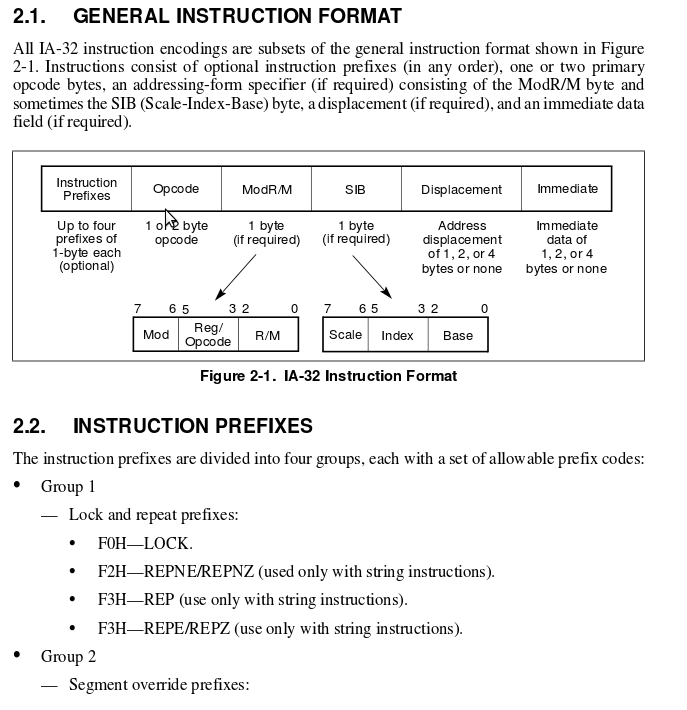 >
>
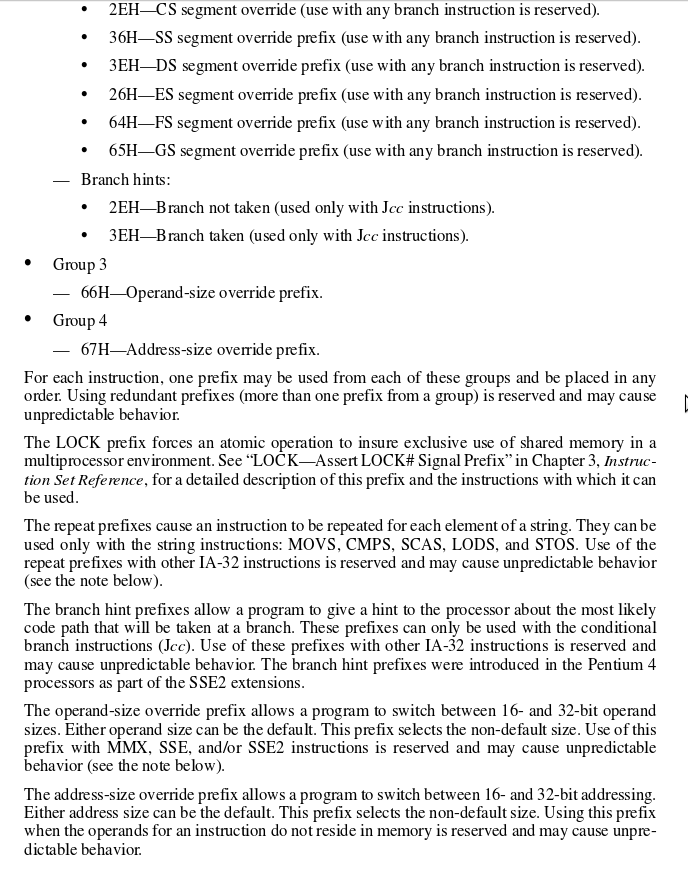
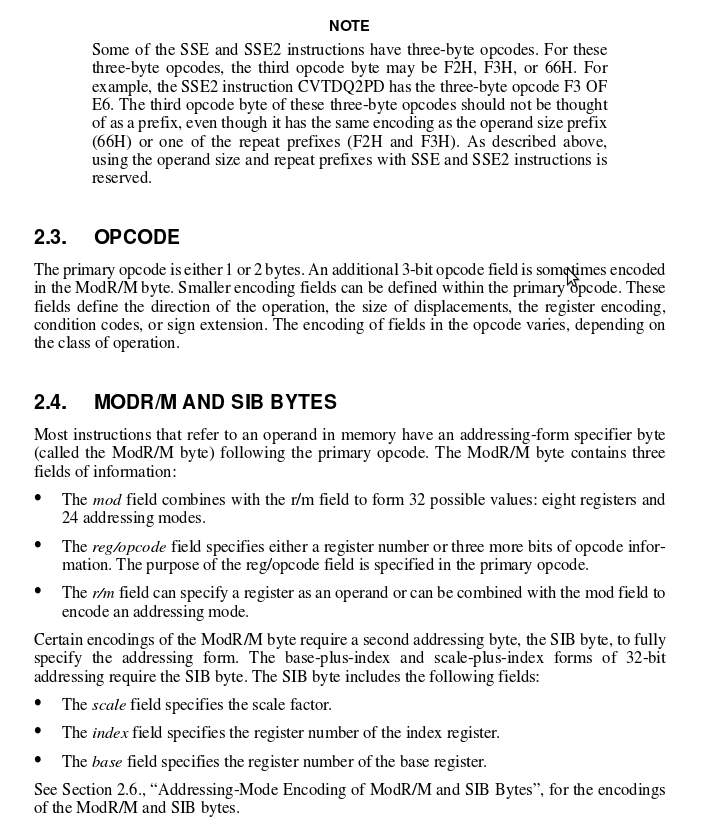
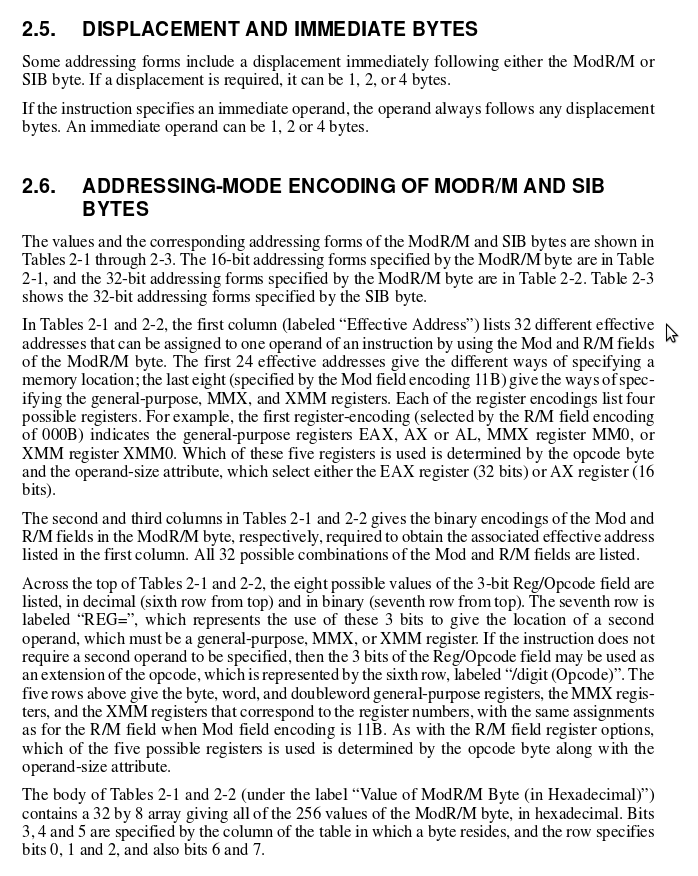
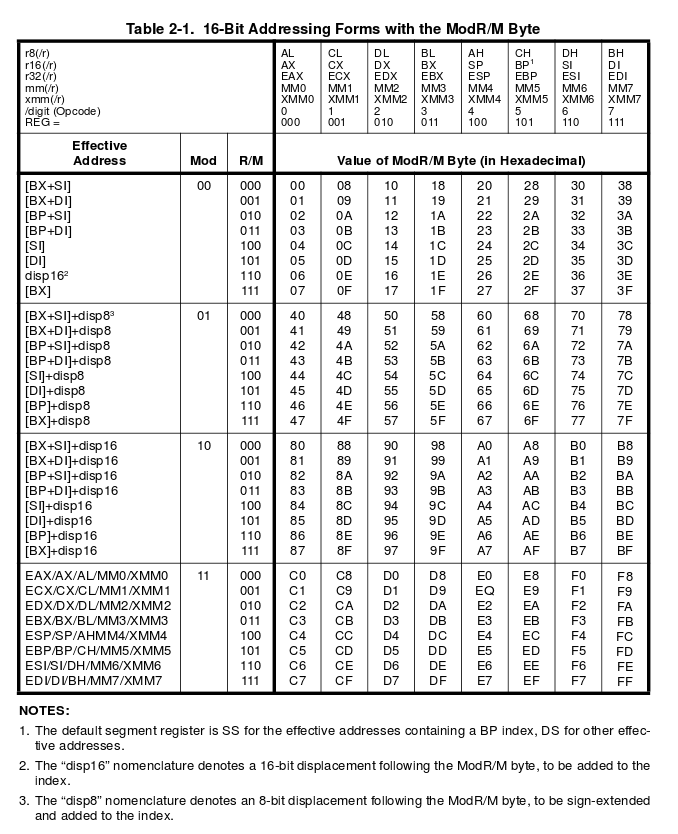
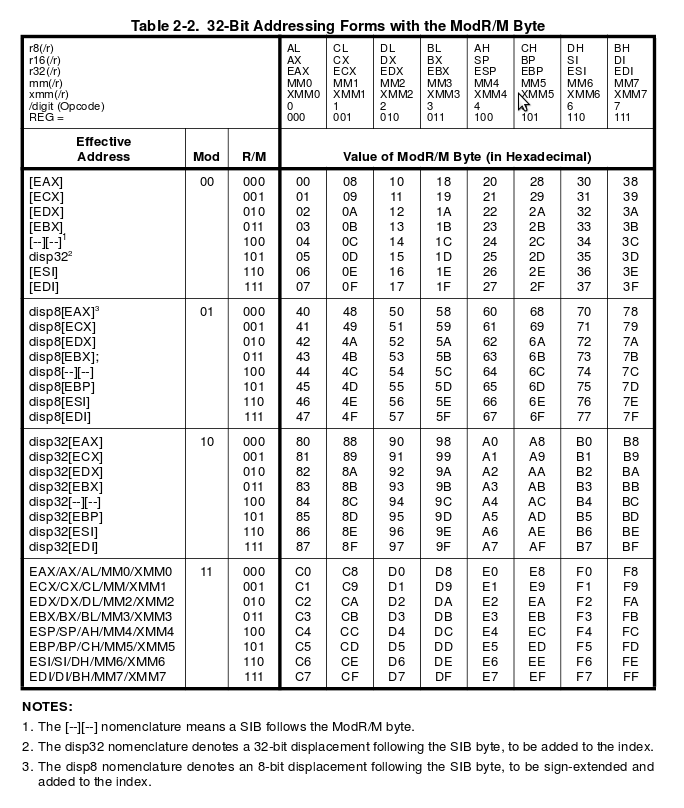
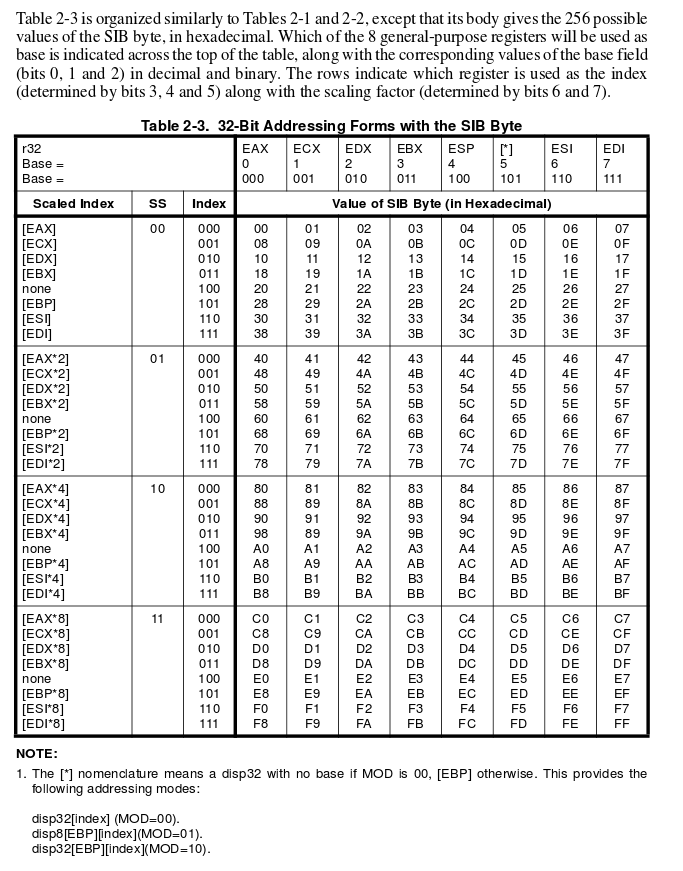 intel64-ia32.pdf full 3439 pages 16.8MB including Instructions(pdf)
The X86-64 and IA-32 are CISC, Complex Instruction Set Computer.
This is in contrast to computer architectures such as the
Alpha, MIPS, PowerPC = Power4 = MAC G5, etc. that are
RISC, Reduced Instruction Set Computer. "Reduced" does not
mean, necessarily, fewer instructions. "Reduced" means
lower complexity and more regularity. Typically all instructions
are the same number of bytes. Four bytes equals 32 bits is the most
popular. Regular in the sense that all registers are general
purpose. Not like the IA-32 using EAX and EDX for multiply
and divide, X86-64 using RAX and RDX for multiply
All MIPS instructions are 32 bits, the 6 bit major opcode
allows 64 instructions and with the 6 bit minor opcode
there may be 4096 instructions. Just a few instruction are shown:
easier to program and simulate
Alpha another RISC architecture
intel64-ia32.pdf full 3439 pages 16.8MB including Instructions(pdf)
The X86-64 and IA-32 are CISC, Complex Instruction Set Computer.
This is in contrast to computer architectures such as the
Alpha, MIPS, PowerPC = Power4 = MAC G5, etc. that are
RISC, Reduced Instruction Set Computer. "Reduced" does not
mean, necessarily, fewer instructions. "Reduced" means
lower complexity and more regularity. Typically all instructions
are the same number of bytes. Four bytes equals 32 bits is the most
popular. Regular in the sense that all registers are general
purpose. Not like the IA-32 using EAX and EDX for multiply
and divide, X86-64 using RAX and RDX for multiply
All MIPS instructions are 32 bits, the 6 bit major opcode
allows 64 instructions and with the 6 bit minor opcode
there may be 4096 instructions. Just a few instruction are shown:
easier to program and simulate
Alpha another RISC architecture
<- previous index next ->
 >
>





 intel64-ia32.pdf full 3439 pages 16.8MB including Instructions(pdf)
The X86-64 and IA-32 are CISC, Complex Instruction Set Computer.
This is in contrast to computer architectures such as the
Alpha, MIPS, PowerPC = Power4 = MAC G5, etc. that are
RISC, Reduced Instruction Set Computer. "Reduced" does not
mean, necessarily, fewer instructions. "Reduced" means
lower complexity and more regularity. Typically all instructions
are the same number of bytes. Four bytes equals 32 bits is the most
popular. Regular in the sense that all registers are general
purpose. Not like the IA-32 using EAX and EDX for multiply
and divide, X86-64 using RAX and RDX for multiply
All MIPS instructions are 32 bits, the 6 bit major opcode
allows 64 instructions and with the 6 bit minor opcode
there may be 4096 instructions. Just a few instruction are shown:
easier to program and simulate
Alpha another RISC architecture
intel64-ia32.pdf full 3439 pages 16.8MB including Instructions(pdf)
The X86-64 and IA-32 are CISC, Complex Instruction Set Computer.
This is in contrast to computer architectures such as the
Alpha, MIPS, PowerPC = Power4 = MAC G5, etc. that are
RISC, Reduced Instruction Set Computer. "Reduced" does not
mean, necessarily, fewer instructions. "Reduced" means
lower complexity and more regularity. Typically all instructions
are the same number of bytes. Four bytes equals 32 bits is the most
popular. Regular in the sense that all registers are general
purpose. Not like the IA-32 using EAX and EDX for multiply
and divide, X86-64 using RAX and RDX for multiply
All MIPS instructions are 32 bits, the 6 bit major opcode
allows 64 instructions and with the 6 bit minor opcode
there may be 4096 instructions. Just a few instruction are shown:
easier to program and simulate
Alpha another RISC architecture